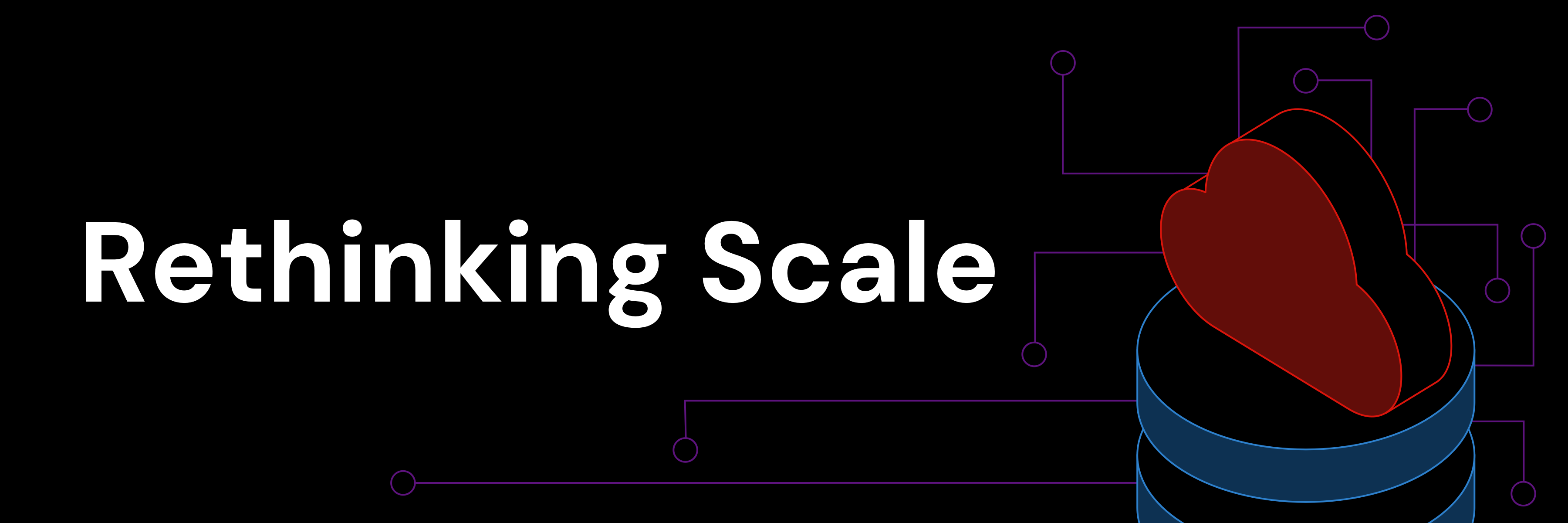
※このブログは2024年11月15日に公開された英語ブログ「Unlocking Modern SaaS Platforms: How Distributed SQL Delivers Multi-Tenancy at Scale」の拙訳です。
HTAP Summit 2024では、業界のベテランでありエンジェル投資家、そしてPinterestでVP of Data Engineeringを務めた経験を持つDave Burgess氏が、分散SQLデータベースが最新SaaSプラットフォームの重要な要素として注目されている理由を紹介しました。基調講演でBurgess氏は、MySQLやPostgreSQLのような従来のデータベースがスタートアップの初期には有効である一方で、ビジネスの規模拡大や複雑なデータ処理の増加に伴い、パフォーマンスやスケーラビリティにおける課題が顕著になることを指摘しました。
このブログでは、SaaSビジネスの成長を測る上で欠かせないKPIを具体的に示し、その重要性について解説します。さらに、Burgess氏の提唱に基づき、分散SQLデータベースがSaaS企業にもたらすメリットを深く掘り下げます。データ集約型のビジネス環境において、分散SQLデータベースがどのようにスケーラビリティ、信頼性、そしてパフォーマンスという課題を解決し、SaaS企業の競争力強化に貢献するのかを詳しくご紹介します。
スケーラブルなSaaSアーキテクチャの需要の増加
Burgess氏は、ビジネス要求と技術的要件の両方が変化し続けるSaaS業界で、スケーラビリティがいかに重要であるかを強調しました。SaaS企業、特にSalesforceやWorkdayのような大規模なプラットフォームを持つ企業は、クラウドインフラに大きく依存しており、予測不可能な使用量の急な増加に対処しなければなりません。生成AIアプリケーションの急速な成長に伴い、信頼性の高いデータシステムへの需要が急増しています。分散SQLデータベースは、プラットフォームに必要なスケーラブルなマルチテナント機能を備えた有力な選択肢として注目されています。
また同氏は、分散SQLデータベースのスケーラビリティにより、増加するデータ量や複雑なトラフィックにSaaSアプリケーションが対応しながら、ユーザーがストレスなく利用できることを説明しました。そして、膨大なアクセス集中時でも安定稼働し、高い可用性、セキュリティ、コンプライアンス要件を満たしながら顧客の期待に応え事業成長を加速させるためには、スケーラブルなアーキテクチャが欠かせないと強調しました。
現代のSaaSビジネスを成功させるための主要なKPI
Burgess氏は、SaaSプラットフォームが成功するためにシステムが満たすべき4つの主要4つのKPIを挙げました。
- 顧客獲得:SaaS企業は、フリートライアルを通じて顧客に製品やサービスの価値を実感してもらい、有料プランへの移行率を高める必要があります。
- 持続的な成長:サブスクリプションモデルは、SaaS企業が顧客数を増やすことと、既存顧客の利用頻度を上げることで事業の成長に貢献します。
- 売上継続率:顧客の離脱を抑え、既存顧客からの収益を最大化することで、SaaSモデルの持続的な成功を実現します。
- 粗利益率:SaaSビジネスでは、収益に対するコスト比率を最適化し、運営コストを削減しながら利益を最大化することが求められます。
これらのKPIを達成するために現代的なSaaSプラットフォームには、スケーラブルで高可用性かつコスト効率の良いデータアーキテクチャが必要であるとBurgess氏は強調しました。分散SQLデータベースは、小規模企業から大企業まで、さまざまな顧客ニーズに対応する柔軟性を提供し、ピーク使用期間中にシームレスにスケーリングする弾力性を提供します。
従来のデータベースアーキテクチャを拡張する際の課題
Burgess氏は、従来のデータベースシステムが、最新のSaaSサービスに必要な機能や性能を提供できないという課題に気づきました。同氏は、多くの企業が、最初はシンプルなSQLデータベースからスタートするものの、データ量が膨大になると、その仕組みでは対応できなくなるという点に言及しました。データ量の増加に伴う需要の高まりに対応するため、企業はデータベースを分割するシャーディングや、自動的な再シャーディング、さらにはNoSQLデータベースのような他の種類のデータベースを導入して、検索やリアルタイム分析といった特定のニーズに対応せざるを得ない状況になることが多いと説明しています。
しかし、このようなアプローチではデータの整合性が取れなくなったり、システムの管理が複雑になったり、維持費が大幅に増えるといった問題が発生します。システムが増えるにつれて、データエンジニアはそれぞれのシステムのデータ構造を一致させたり、異なるシステム間のデータの食い違いを修正したりする作業に多くの時間を費やすことになります。また、システムがバラバラになっていると、開発者が新しい技術をスムーズに導入することが難しくなり、結果としてシステム全体の運用コストが高くなってしまいます。Burgess氏は、分散SQLデータベースを利用することでこれらの異なるシステムを統合し、システムの拡張性を高めながらデータの一貫性を保ち、高いパフォーマンスを実現できると説明しています。
最新のSaaSプラットフォームにおける高可用性のニーズに応える
最新のSaaSプラットフォームにおいて、高い可用性を維持することは不可欠です。Burgess氏は、分散SQLが各ノード間でデータを複製し、障害が発生した場合には自動的に別のノードに処理を引き継ぐことで、高い可用性をどのように実現しているかを強調しました。クラウド環境では、個々のサーバーや、複数のサーバーが集まるアベイラビリティゾーン全体が停止してしまう場合も想定されますが、分散SQLは、稼働中の他のノードに処理を振り分けることで、アプリケーションの稼働を継続させます。この機能は、特にビジネスの成否を左右するような重要なアプリケーションにおいて、ユーザーからの信頼を得るために欠かせないものです。
HTAP Summit 2024の基調講演に登壇した元Pinterest VP of Data EngineeringのDave Burgess氏。
Burgess氏は、分散環境におけるデータの一貫性とレイテンシーの関係について、興味深い点を指摘しました。例えば、複数の地域にまたがるデータベースのように、地理的に離れた場所にあるデータにアクセスする場合、わずかなデータの遅延は許容できるかもしれません。しかし、同じ地域内のように比較的近い場所にあるデータであれば、分散SQLはデータの整合性を保ちつつ高い処理速度を実現することで、ユーザーがスムーズにシステムを利用できるようにします。
最新のSaaSプラットフォームでスケーラビリティを実現するためのマルチテナンシーの確保
最新のSaaSプラットフォームにおいて、マルチテナント機能もまた不可欠です。これは、1つのシステムで複数の顧客のデータや処理を隔離し、それぞれにサービスを提供する仕組みです。Burgess氏は、分散SQLデータベースが各テナントのデータと計算リソースを効果的に分離できる点に注目しています。これにより、異なるテナントのデータが混ざり合うことなく、それぞれのテナントが自分たちのデータにしかアクセスできないようにすることができます。この仕組みは、システムの柔軟な拡張性にもつながります。例えば、あるテナントの利用が増加した場合、そのテナントにだけ必要なリソースを追加することで、コストを抑えながらシステム全体のパフォーマンスを維持することができます。
分散SQLデータベースの柔軟なマルチテナントアーキテクチャは、SaaS企業がハイブリッドなサービス提供モデルを採用する上で大きな後押しとなります。このモデルでは、小規模な顧客は複数の顧客でデータベースを共有し、大規模な顧客には専用のデータベースリソースが割り当てられます。これにより、データの安全性と処理性能を確保しつつ、運用コストを最適化することが可能になります。
分散SQLデータベースでアーキテクチャの複雑さを軽減
Burgess氏はまた、分散SQLが複数のデータストアを単一のシステムに統合することで、アーキテクチャの複雑さを軽減する方法も説明しました。従来のアーキテクチャでは、リレーショナルデータベース、NoSQLデータベース、検索エンジン、リアルタイム分析データベースなど、それぞれ独自のスキーマと同期要件を持つ別個のデータベースが必要でした。一方、分散SQLはこれらの機能を統合し、データ管理を効率化し、一貫性を向上させます。
分散SQLにより、企業は変化するビジネス要件に迅速に対応できます。スキーマ変更、データ更新、新機能の実装が運用を中断することなく簡単に行えるためです。この簡素化されたアーキテクチャは、データ整合性と可用性を向上させるだけでなく、コストを削減し、エンジニアがインフラストラクチャの維持ではなく革新的な機能の構築に集中できるようにします。
Real-World Case Studies: Catalyst and Pinterest
Burgess氏は、分散SQLデータベースが実際にどのように役立っているのか、2つの具体的な事例を挙げながら説明しました:
- Catalyst:Catalyst社は、従来のPostgreSQLとElasticsearchに代えて、オープンソースの分散SQLデータベースであるTiDBを採用しました。その結果、クエリ処理速度が10倍に向上し、大幅なコスト削減に成功しました。また、TiDBへの移行により、スケーラブルで一元管理できるデータプラットフォームを構築し、リアルタイムでのデータ連携とスキーマ管理の効率化を実現しました。
- Pinterest:Pinterest社は大規模なHBaseクラスタのスケーラビリティと運用コストの課題を解決するため、TiDBへのマイグレーションを実施しました。TiDBの分散SQLアーキテクチャにより、レイテンシーを低減し、強い一貫性を確保することで、大規模なデータ処理性能を向上させました。これにより、エンジニアはインフラの管理から解放され、より高度なアプリケーション開発に注力できるようになりました。
これらの事例は、TiDBのような分散SQLデータベースが、大規模な最新のSaaSプラットフォームのスケールアウト、高性能化、そして複雑なデータ管理の課題を解決できるソリューションであることを示しています。
まとめ
分散SQLデータベースは、スケールアウト、高可用性、マルチテナントといったSaaSプラットフォームに求められる特性を備えており、従来のデータベースが抱えるスケーラビリティの限界や運用コストの課題を克服します。特に、TiDBのような分散SQLデータベースは、その柔軟なアーキテクチャにより、複雑なデータモデルやワークロードにも対応できるため、最新のSaaSアプリケーションの基盤として注目されています。
Burgess氏は、分散SQLデータベースがSaaSプロバイダーに与える影響について、データ運用の効率化、コスト最適化、そしてイノベーションの促進という3つの側面から強調しています。特に、AI駆動型のデータ分析が求められる現代において、分散SQLデータベースは、スケーラビリティ、高可用性、そしてACIDトランザクションといった特性を備え、SaaSプラットフォームの基盤技術として不可欠なものとなっています。
最新のSaaSアプリケーションを構築・拡張するために、最適なデータアーキテクチャを探していますか?このイベントの基調講演の全編をこちらからご登録の上ご覧ください
TiDB Cloud Dedicated
TiDB Cloudのエンタープライズ版。
専用VPC上に構築された専有DBaaSでAWSとGoogle Cloudで利用可能。
TiDB Cloud Starter
TiDB Cloudのライト版。
TiDBの機能をフルマネージド環境で使用でき無料かつお客様の裁量で利用開始。



